In the Philippines, low-tech solar lamps are lighting up isolated villages
Published 2 May 2019 by Jean-Jacques Valette
Sustainable and easy to repair, Liter of Light lamps are a model of open source technology for human development. Low-tech Lab came to study this example on its world tour of frugal innovation.
Philippines, from our Feral Labs chronicler-in-residency aboard the Nomade des Mers (words and photos)
“We city-dwellers take light for granted,” says Mitch Tiongson. “But in the Philippines, one out of five people doesn’t have access to it.” As a member of the nonprofit organization Liter of Light, this former industrial electrician has come to install solar lamps in the village of Sitio Anipa—an isolated community of about 40 families who live along the river in the Sierra Madre mountains, east of Manila.
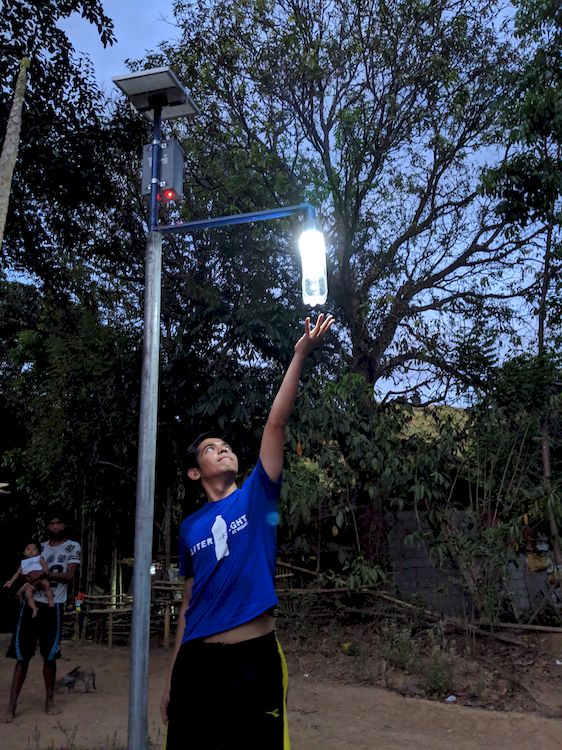
Beside him, French engineer Corentin de Chatelperron holds an electrified gas lamp. “Our objective with Low-tech Lab is to discover technical solutions that are useful, accessible and sustainable in meeting human needs such as access to energy, water and food,” he says. “And this is a great example of low-tech.”
For the past three years, he and his team have been sailing around the world on the Nomade des Mers in order to discover these frugal innovations, replicate and publish them online as open source blueprints.
“We saw other light systems during our trip, like the solar lamps of Little Sun. But Liter of Light is the only organization that we know of that produces lamps that can be repaired with a true low-tech approach.”
Liter of Light origin story:
Founded in 2013 by Filipino architect and social entrepreneur Illac Diaz, Liter of Light was originally known for its ingenious solution to bring natural light into cabins built in the slums of Manila: a simple plastic bottle filled with chloride water, installed in the rooftop, which diffuses sunlight into a windowless room.
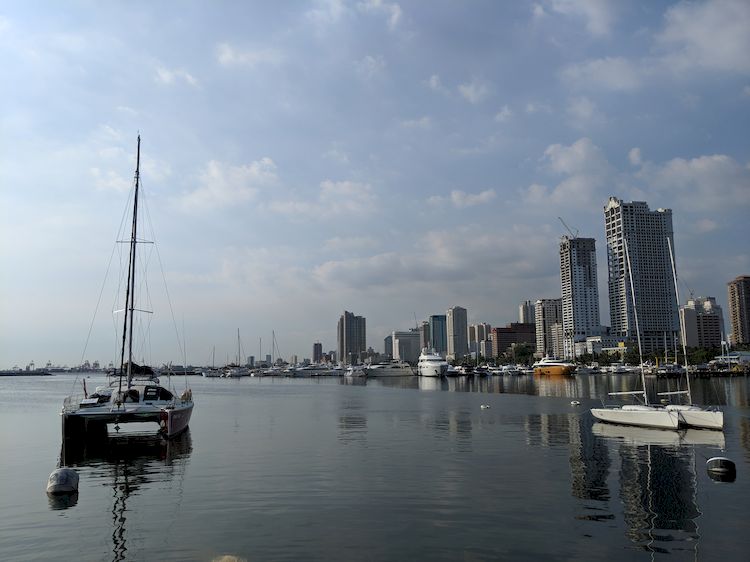
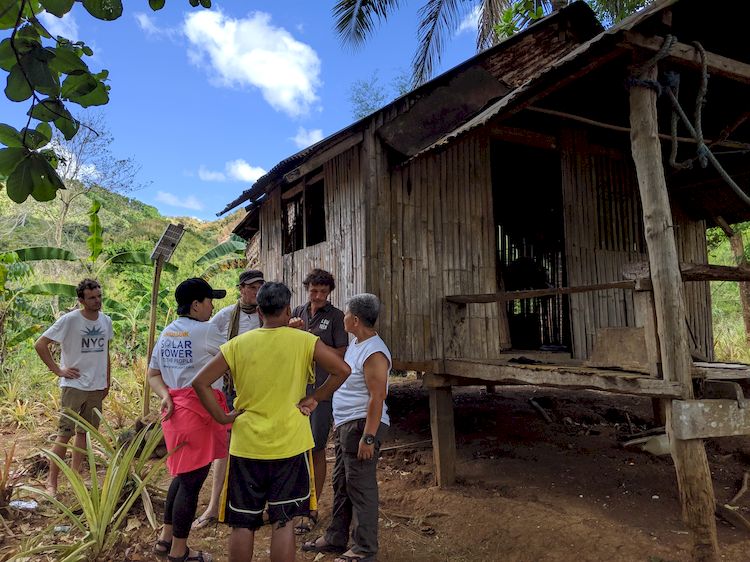
500,000 lamps distributed
After successfully experimenting with an electric version equipped with an LED in the cap, Liter of Light decided to refocus its efforts on building and distributing DIY solar lamps.
“Of course, these days you can buy a solar lamp made in China for a few euros and distribute it to thousands of people in need. But two years later the lamps break, and we would have to start all over again,” Diaz explains.
The social entrepreneur took a different approach: build lamps with quality components, using a circuit that the beneficiaries can repair themselves. “We don’t assemble the lamps directly in the communities, because it’s very time-consuming and difficult to control for quality,” he says. “But in each village, there is at least one person with basic technical knowledge whom we train to repair them.”
The lamps are built either by female inmates, providing them with income and skills, or by employees of big companies that are partnered with Liter of Light as part of their corporate social responsibility policy. Thanks to these training workshops, Liter of Light is entirely financially independent. It is also present in 26 other developing countries, where it has distributed more than half a million lamps since its inception.
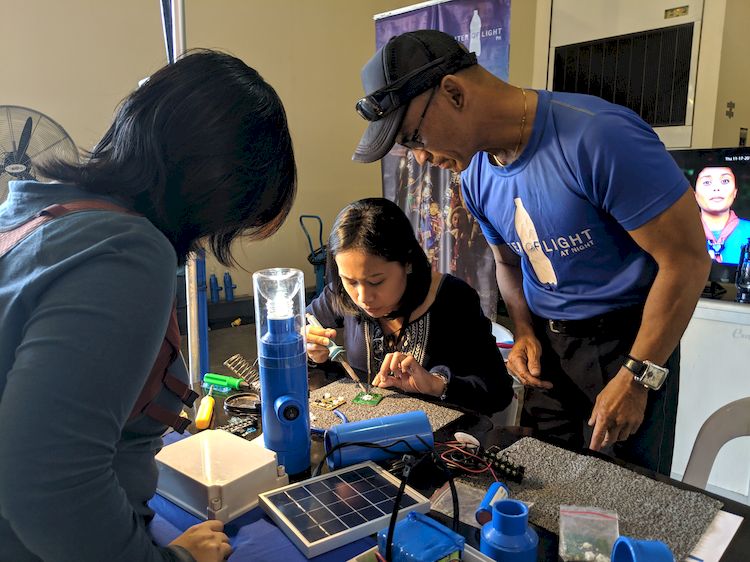
Guaranteed: no obsolescence
“We have two different techniques for assembly according to the situation,” explains Mitch. “One uses printed circuit boards that we designed ourselves, with components that are easy to solder and desolder, with marks to guide the user. In communities that don’t even have access to a soldering iron, we use a domino to connect the components.”
“Very few things are required to build a solar lamp,” adds his colleague Myrna Gayoso, a former inmate who is now employed by Liter of Light as a technician. “For the circuit, we use one 1.5W LED, 3 resistors, a diode and a transistor to turn on the lamp automatically after sunset. On our website we list all the references and even alternatives, so that you can build a lamp from recycled parts.”
To this they added a 10W solar panel made in Taiwan, a switch and an optional USB port to charge electronic devices. The only consumables are the lithium battery and its integrated charge regulator, which needs to be changed every 3-5 years.
“We use big batteries, up to 9 lithium-ion cells,” says Myrna. “The goal is for the lamp to stay lit for more than 45 hours without recharging, because we get over 20 typhoons a year, and they can last for 3 days, during which time the battery can’t be completely recharged.”
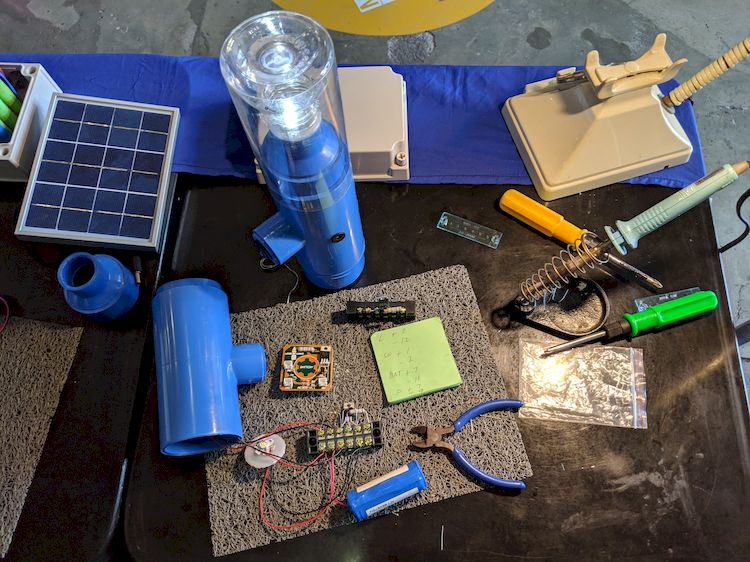
The cost of quality: between 15€ and 20€ for a small lamp, like the gas lamps that Liter of Light electrifies; or between 100€ and 120€ for a more powerful lamp, like the ones that can light up a house or hang on a lamppost, also produced by Liter of Light.
Fireflies in the jungle
As the sun sets over the valley, village chief Ernesto Cruz Saramiento proudly shows us these lamps that light up like fireflies in the jungle. “Here, night falls between 5:30 PM and 6:30 PM depending on the season, as we’re near the equator. Thanks to these lanterns, we can stay up much later, which allows the children to study and the parents to continue working. They’ve really changed our lives.” The solar lamps are also much safer and cheaper than the gas lamps.
The battery also powers a portable DVD player, which Ernesto’s family uses to watch movies or play music.
“It surprised me that the residents would rather power up karaoke than a refrigerator, even if they have to walk several kilometers each day to fetch ice,” Corentin comments. “It makes you think about the true basic needs of people. We can’t underestimate the importance of leisure and social life.”
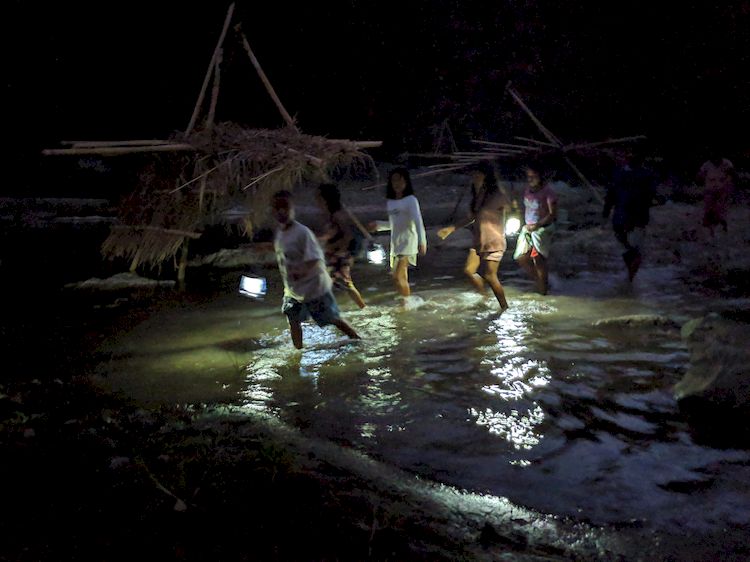
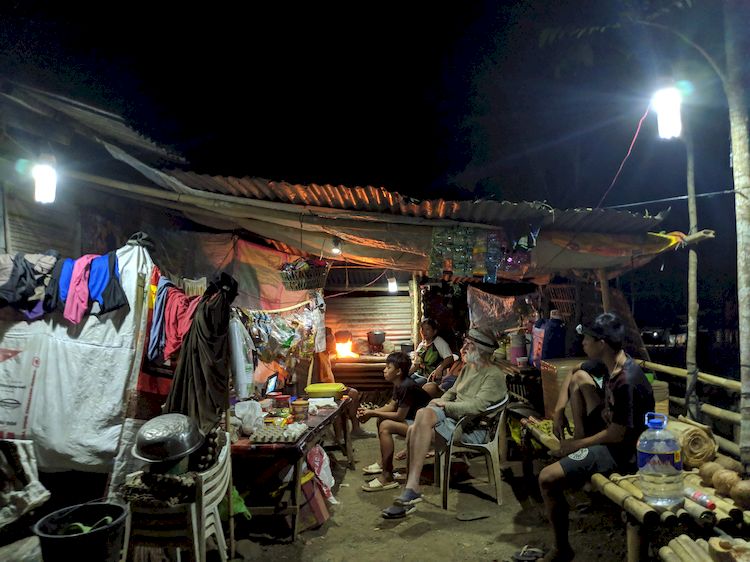
Autonomy for under 10€
Under the supervision of Myrna and Mitch, Corentin tries to assemble a lamp himself, contained in a thick blue PVC tube at the end of a diffuser cut into the neck of a plastic bottle.
“We could also use bamboo or clay, but the PVC is waterproof, which is more practical for fishermen,” says Diaz. “We’re also building navigation signal lights so that the pirogues don’t get hit by bigger ships in the middle of the night.”
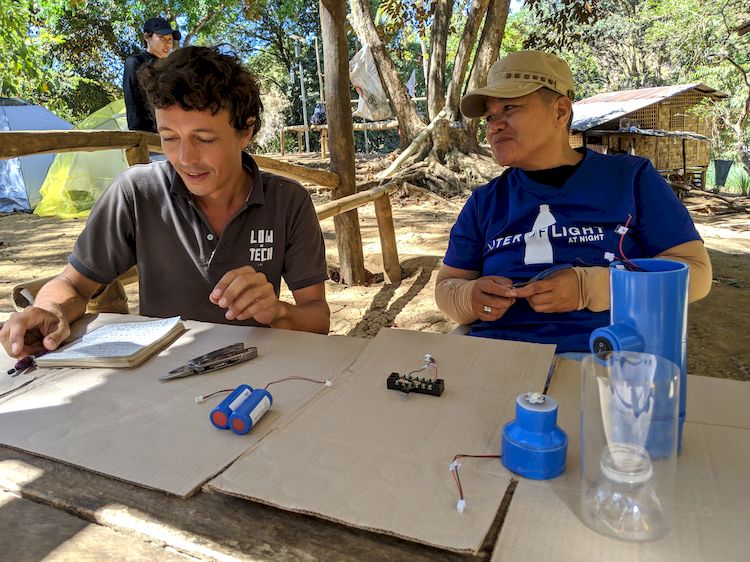
“I think we could go even cheaper, under 10 euros,” Corentin reckons. “Repairable printed circuit boards are a good idea on paper, but they require lots of technical knowledge and blow up the price. So do big pieces of PVC plumbing, which cost as much as the rest of the lamp.”
Back aboard the Nomade des Mers in the port of Manila, Corentin tackles building a prototype low-tech solar lamp, assisted by Johnny Allen and Cyprien Cayla—two seasoned makers, respectively eco-architect and engineer.
“When we were working on the windmills in Dakar, we wanted to design our own circuits and ran into the same problems of cost and complexity,” Corentin recalls. “In fact, it’s simpler to buy all-in-one modules for less than 1 euro. Like a charge regulator for the battery or a ‘step-up’ to increase the tension from 3.7V to 5V and charge smartphones via USB.”
To store energy, they have another idea: reuse the cells from an old computer battery. “Each battery contains 4 to 6 3.7V lithium-ion cells,” explains Corentin. “In general 1 or 2 are dead, with less than 2.4V, but the others are just fine. It’s a technique we discovered in Sumatra, in a house that was completely off the grid, where all the appliances were powered this way.”
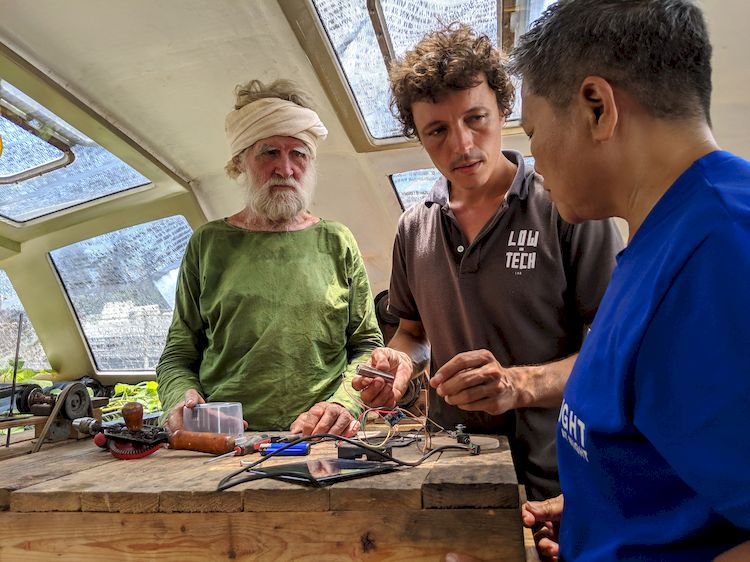
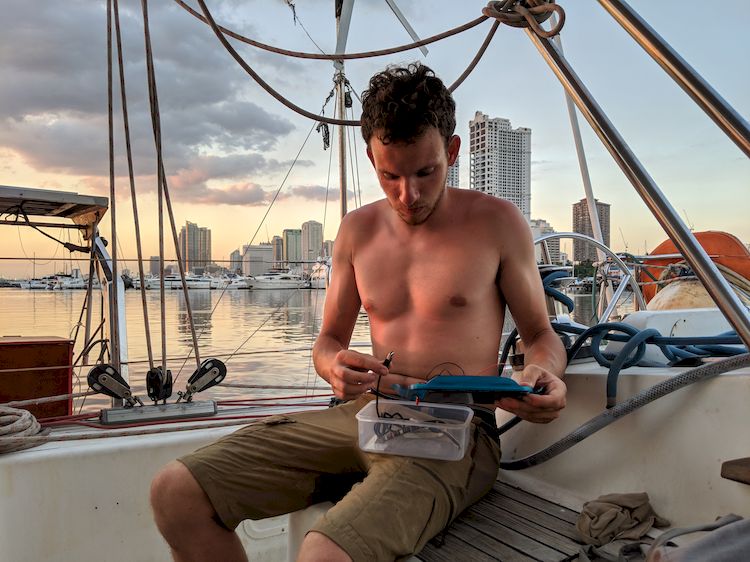
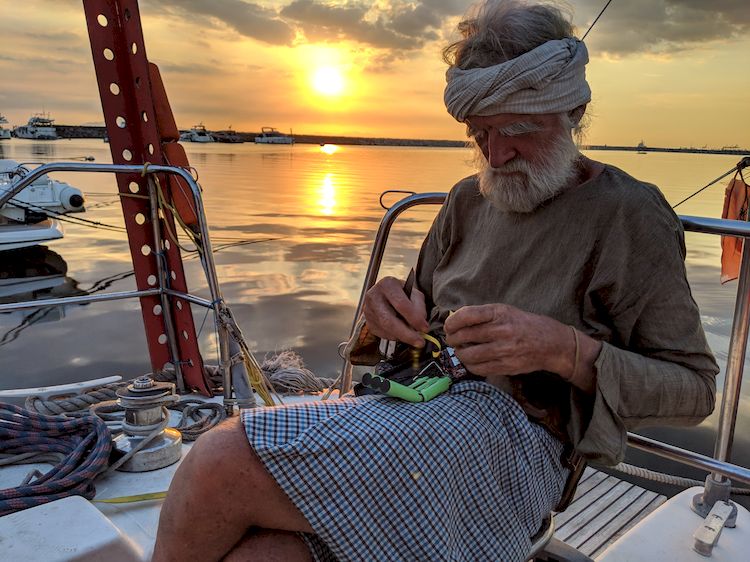
Mesh network and WiFi
As Johnny solders the components and attaches them to a wooden plank, Cyprien cuts out a Coca-Cola bottle. “Unfortunately, we find these bottles everywhere on the planet, all the way to the bottom of the ocean,” says the young engineer. “But they’re made of a thick plastic that can be shaped by heat. We’re trying to make a lantern that is durable, waterproof and attractive by heating this plastic around a plank of wood to give it a rectangular shape.”
After a few unsuccessful attempts and an emergency repair of a 220V converter to power the thermal scraper, Low-tech Lab’s solar lamp is finally ready and illuminates the bridge of the catamaran. Now they just need to document the process and post the tutorial online.
“We have a database of all the people involved in low-tech around the world, so now we can share this invention with them,” says Corentin. “In the three years that we’ve been navigating, we still hadn’t solved a problem as simple as illumination. But with this lamp, I think we’re on the right track.”
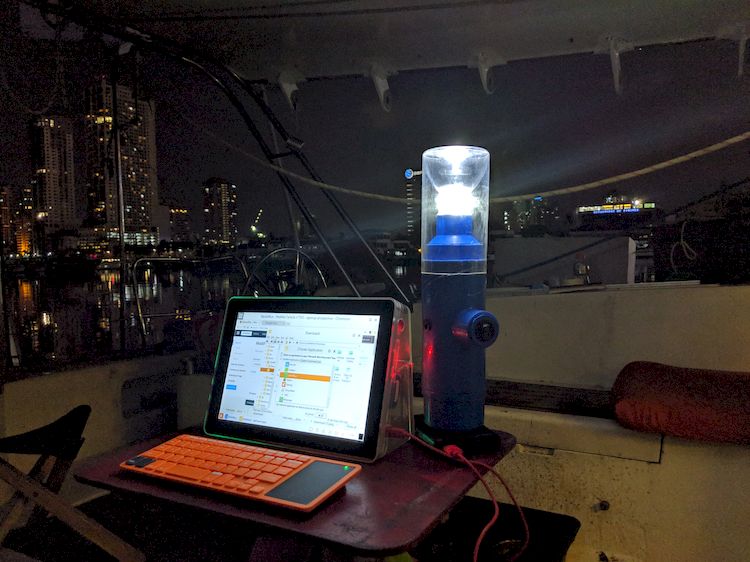
Illac Diaz already has other plans for his nonprofit Liter of Light, such as adding Raspberry Pi to their lamps. The 35€ mini computers will provide WiFi through a mesh network.
“Perfect timing, as low-tech electronics is the theme of our next stop in Taiwan!” smiles Corentin. Tomorrow, the Nomade des Mers will set sail toward the Big Dipper… and new adventures.
More on Low-tech Lab’s world tour aboard the Nomade des Mers catamaran.
